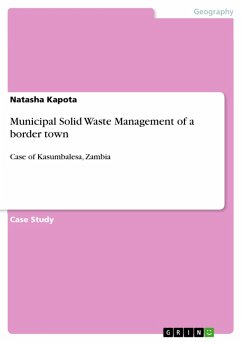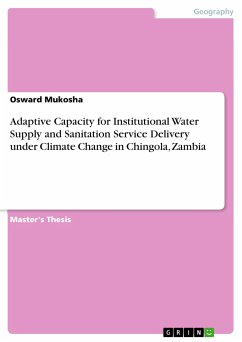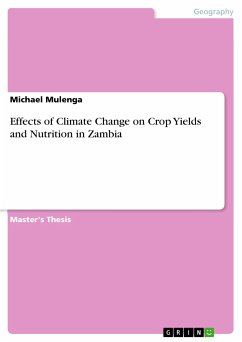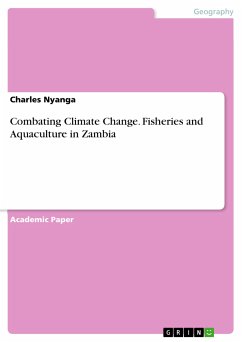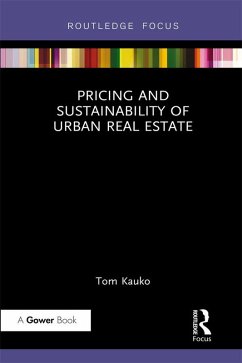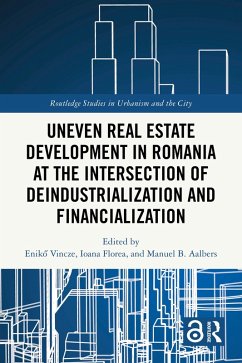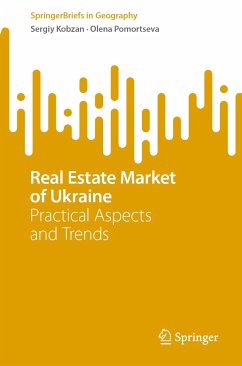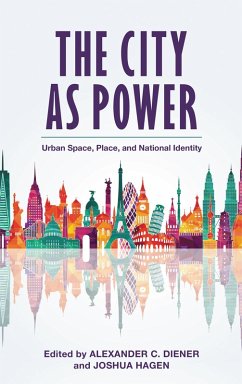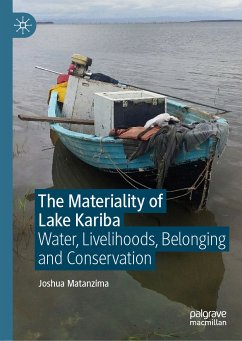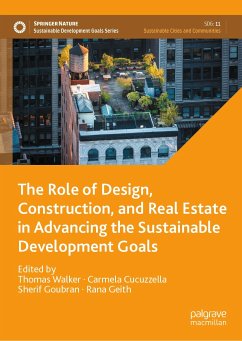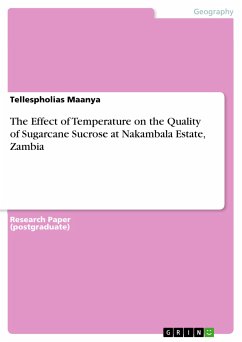
The Effect of Temperature on the Quality of Sugarcane Sucrose at Nakambala Estate, Zambia (eBook, PDF)
Sofort per Download lieferbar
Statt: 27,95 €**
18,99 €
inkl. MwSt. und vom Verlag festgesetzt.
**Preis der gedruckten Ausgabe (Broschiertes Buch)
Alle Infos zum eBook verschenkenWeitere Ausgaben:

PAYBACK Punkte
0 °P sammeln!
Research Paper (postgraduate) from the year 2022 in the subject Geography / Earth Science - Physical Geography, Geomorphology, Environmental Studies, grade: A, , language: English, abstract: Global, regional, and national temperatures have indeed been on an increase over the past few decades. This rise in temperature can have significant changes not only on the quantity but also on the quality of production in the agriculture sector. Hence, the study on the effect of temperature on the quality of sugarcane sucrose produced in the last twenty (20) years from the year 2001 to 2020 at Nakambala e...
Research Paper (postgraduate) from the year 2022 in the subject Geography / Earth Science - Physical Geography, Geomorphology, Environmental Studies, grade: A, , language: English, abstract: Global, regional, and national temperatures have indeed been on an increase over the past few decades. This rise in temperature can have significant changes not only on the quantity but also on the quality of production in the agriculture sector. Hence, the study on the effect of temperature on the quality of sugarcane sucrose produced in the last twenty (20) years from the year 2001 to 2020 at Nakambala estate was instituted. Nakambala estate is located 125km south of Lusaka, Zambia at a geographical location of 15o 52' 0'' S and 27o 46' 0'' E. This scientific study used historical data measured by an automated sacharimeter (to test for sucrose content) at the Direct Analysis of Cane Laboratory (DAC) stored on the Nakambala intranet communication systems. The temperature data was obtained from the automated meteorological station located at geographical coordinates 15o 14' 85'' S and 27o 44' 31'' E. The temperature analysed was the average of the maximum and minimum temperature. The mean yearly temperature values were obtained from the annual monthly means and were plotted on graphs against time. The sucrose quality against time was plotted to establish relationships. The sugarcane sucrose quality data was detrended to remove other influencing factors on sucrose quality. Similarly, the non-detrended data was also used to obtain relationships with annual mean temperature. The excel data analysis tool pack was used obtain tables for the Analysis of Variance and the regression analysis.
Dieser Download kann aus rechtlichen Gründen nur mit Rechnungsadresse in A, B, BG, CY, CZ, D, DK, EW, E, FIN, F, GR, HR, H, IRL, I, LT, L, LR, M, NL, PL, P, R, S, SLO, SK ausgeliefert werden.




